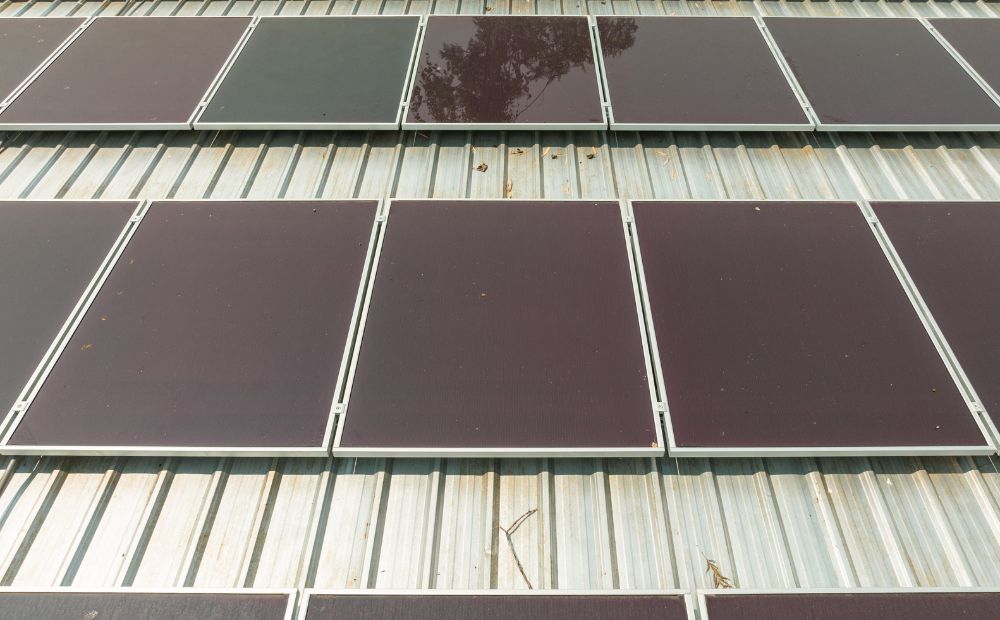Thin-Film Solar Cells: Lightweight and Flexible Solutions for Solar Energy Harvesting

The global shift towards sustainable energy sources has propelled solar technology to the forefront of innovation. Among the various types of solar cells, thin-film solar cells stand out due to their unique attributes of being lightweight, flexible, and cost-effective. This blog explores the latest advancements and applications of thin-film solar cells, demonstrating their potential to revolutionize the solar energy landscape.
Thin-film solar cells are created by depositing one or more thin layers of photovoltaic material onto a substrate. These layers are typically a few micrometers thick, which is much thinner than traditional silicon-based solar cells. The primary materials used in thin-film solar cells include amorphous silicon (a-Si), cadmium telluride (CdTe), copper indium gallium selenide (CIGS), and organic photovoltaic cells (OPVs).
Advantages of Thin-Film Solar Cells
Advantages of Thin-Film Solar Cells
1. Lightweight and Flexible: Unlike traditional rigid solar panels, thin-film solar cells can be manufactured on flexible substrates, making them ideal for applications where weight and flexibility are crucial.
2. Cost-Effective Production: The manufacturing process of thin-film solar cells typically involves less material and energy, reducing overall production costs.
3. Versatile Applications: Their flexibility and lightweight nature allow thin-film solar cells to be used in a variety of innovative applications, including portable solar chargers, building-integrated photovoltaics (BIPV), and even wearable technology.
Recent Advancements in Thin-Film Solar Technology
The field of thin-film solar cells has seen significant advancements in recent years, driven by research aimed at improving efficiency, stability, and integration capabilities. Here are some notable developments:
1. Perovskite Thin-Film Solar Cells: Perovskite materials have emerged as a game-changer in the solar industry. Researchers have developed perovskite-based thin-film solar cells with remarkable efficiency improvements. Recent studies have demonstrated efficiencies exceeding 25%, rivaling traditional silicon-based solar cells. Moreover, advancements in encapsulation techniques have improved the stability and durability of perovskite solar cells, making them more viable for commercial applications.
2. Flexible CIGS Solar Cells: Copper indium gallium selenide (CIGS) thin-film solar cells have achieved notable success due to their high efficiency and flexibility. Recent innovations have focused on enhancing the efficiency and reducing the production costs of CIGS cells. For instance, researchers at the Empa Swiss Federal Laboratories have developed flexible CIGS solar cells with efficiencies exceeding 20%, marking a significant milestone in the commercialization of flexible solar technology.
3. Organic Photovoltaic Cells (OPVs): Organic photovoltaic cells, known for their lightweight and flexible properties, have seen substantial progress. Innovations in organic semiconductor materials have led to improved efficiencies and longer lifespans. Companies like Heliatek have been pioneering in this space, developing organic solar films that can be integrated into building facades, windows, and other surfaces, offering a seamless and aesthetically pleasing solar solution.
4. BIPV Integration: Building-integrated photovoltaics (BIPV) represent a significant area of application for thin-film solar cells. Recent projects have demonstrated the successful integration of thin-film solar panels into building materials, such as roofing tiles, facades, and glass windows. These integrations not only provide clean energy but also enhance the architectural aesthetics of buildings. Companies like Tesla have been at the forefront, developing solar roof tiles that blend seamlessly with traditional roofing materials while generating electricity.

Real-World Applications and Case Studies
1. Solar Windows: One of the most promising applications of thin-film solar cells is in the development of solar windows. Companies like Ubiquitous Energy are leading the charge with transparent solar cells that can be applied to windows, allowing buildings to generate electricity while maintaining natural light and visibility. This technology has the potential to transform skyscrapers and office buildings into power-generating structures without compromising on design.
2. Wearable Solar Technology: The flexibility and lightweight nature of thin-film solar cells make them ideal for wearable technology. Researchers are developing solar-powered clothing and accessories that can charge electronic devices on the go. For example, solar backpacks equipped with thin-film panels can charge smartphones, tablets, and other gadgets, providing a convenient solution for outdoor enthusiasts and travelers.
3. Agrivoltaics: Thin-film solar cells are also finding applications in agrivoltaics, where solar panels are integrated with agricultural activities. The lightweight and flexible nature of these cells allows them to be installed on greenhouse roofs or over crops without causing damage. This dual-use approach maximizes land use efficiency by simultaneously generating electricity and supporting agricultural production.
4. Portable Solar Chargers: The portability of thin-film solar cells has led to the development of compact and lightweight solar chargers for personal electronic devices. Products like the PowerFilm Solar Charger utilize flexible thin-film technology to provide a reliable power source for camping, hiking, and emergency situations. These chargers are durable, foldable, and can be easily carried in a backpack.
Leading Companies:
1. Onyx solar (https://onyxsolar.com/)
It is an online platform offering solar panel solutions founded in the year 2009.
2. mPower Technologies (https://mpowertech.com/)
Founded in the year 2008, mPower Technologies are provider of flexible silicon-based solar panels.
3. Moser Baer:(https://www.moserbaersolar.com/)
They are manufacturers of Solar modules and offers solar EPC services in India.
4. Silevo (http://www.silevosolar.com/)
Founded in the year 2007, they are Solar photovoltaic (PV) cell technology innovator manufacturer.
5. AmberWave Systems (http://www.amberwave.com/)
AmberWave a former subsidiary of US Robotics Corp is a solar cell manufacturer. In 2010 the company was closed down and a new company AmberWave Inc was formed. The company manufactures solar cell and is developing technology that involves “strained silicon” that makes silicon chips faster and more efficient.
6. GT Advanced Technologies (http://www.gtat.com/)
The company’s manufacturing equipment and services support the growth of the Solar and LED industries.
7. Apollo Power (https://www.apollopowersystems.com/solar-solutions)
They are Developer of solar thin films and solar home systems.
8. SunMan (https://www.sunman-energy.com/)
They are developer of flexible PV modules.
9. SOFTPV (https://softpv.com/)
They are Provider of solutions for solar and electrode cells.
10. OptiSolar Technologies (https://www.opti-solar.com/)
They Manufactured thin film solar modules
Challenges and Future Directions
While thin-film solar cells offer numerous advantages, they also face certain challenges. The efficiency of thin-film solar cells, although improving, still generally lags behind that of traditional silicon-based cells. Stability and longevity are also areas that require further research and development to ensure long-term performance and reliability.
Future directions in thin-film solar technology will likely focus on:
1. Efficiency Improvements: Continued research into materials and fabrication techniques is essential to further enhance the efficiency of thin-film solar cells. Breakthroughs in perovskite materials, multi-junction cells, and novel organic compounds hold promise for achieving higher efficiencies.
2. Scalability and Manufacturing: Developing scalable manufacturing processes that can produce thin-film solar cells at a lower cost and higher volume is critical for widespread adoption. Innovations in roll-to-roll processing and inkjet printing are paving the way for more cost-effective production methods.
3. Integration with Energy Storage: Combining thin-film solar cells with advanced energy storage solutions, such as solid-state batteries and supercapacitors, can address the intermittency issues associated with solar energy. Integrated systems can store excess energy generated during peak sunlight hours for use during periods of low sunlight.
Thin-film solar cells represent a transformative advancement in solar technology, offering lightweight, flexible, and cost-effective solutions for solar energy harvesting. With ongoing research and development, these cells are poised to play a significant role in the transition to renewable energy, driving innovations in applications ranging from building-integrated photovoltaics to wearable technology.
As efficiency and scalability continue to improve, thin-film solar cells will become an increasingly viable and attractive option for sustainable energy generation. To facilitate an understanding of the latest developments and trends in the Renewable energy Industry, various Conferences and Expos, which bring the Industry leaders together, are crucial. The Energy Evolution Awards, Conference, and Expo organized by Next Business Media is making its debut in Spain in 2025.
It will be a leading forum dedicated to honoring excellence in Energy Technology, showcasing innovations, and fostering collaborations. The events unite industry leaders, and visionaries to explore the latest advancements, tackle key challenges, and shape the future of Energy.
The Energy Evolution Awards, Conference, and Expo will celebrate outstanding achievements, promote sustainable practices, and drive the Energy Industry forward into a technologically advanced sustainable era. Energy Evolution Awards, Conference, and Expo will be a platform for cultivating innovation and shaping a brighter, more efficient energy landscape.





